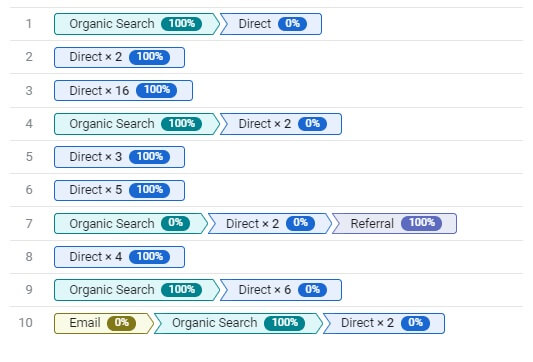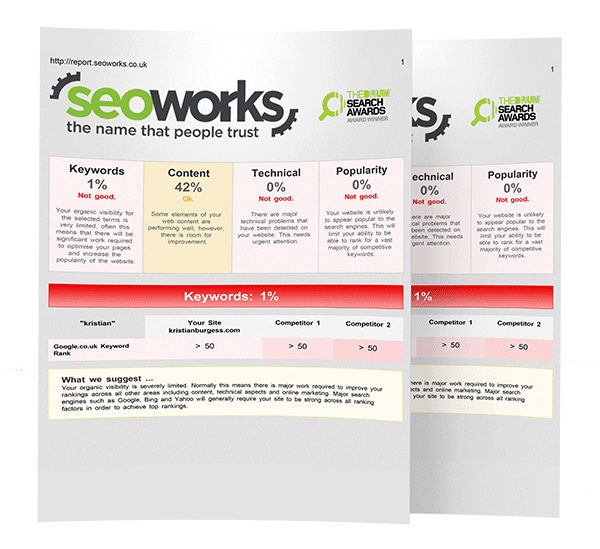Attribution Models: A Neverending Story
Every website conversion or action on a site has a story behind it.
And like any story worth its salt, each of these conversions has a beginning, a middle and an end. In the case of attribution modelling though, most of them have a beginning, about 5 middles, and then an end.
A study from Retail Touchpoints in 2018 found that only 17% of users to eCommerce sites visit with the intent to buy on the first visit. More often than not users visit a site to browse, compare prices or do research; which means that a single user is likely to visit the same site several times before finally clicking that purchase button.
Attribution modelling is something that can provide fascinating insights into the behaviour of your user, the journey they go on and how they interact and find your site before pressing that magical ‘confirm purchase/submit now/create happy ending’ button.
Not only that, but by looking at different attribution models you can get a better idea of your return of investment into marketing channels and see how they really contribute to the site’s performance.
Spoiled Endings
Traditionally, and indeed by default in the case of Google Analytics, the last-click attribution model is used on sites that track conversions. Whilst this may indicate which channels are the likely final destination for buyers, this doesn’t give credit to the user journey.
Whether they interact once, twice or 10 times in this process, only the final session will count. Imagine picking up a book and reading the last chapter – you get the conclusion but you don’t get the story, and that’s where the really good stuff resides.
This isn’t the only way to measure attributions – there are a handful of attribution models that you can use to not only see how users convert, but also see the journey they go on to get there.
First-click attribution credits the first interaction of the site and is useful for gauging which traffic channels are helping increase new users, linear attribution assigns equal credit to each step the user makes on the journey and time decay attribution assigns weighted credit to the steps closer to the conversion.
In Google Analytics you can also use more complex models, like the last non-direct click attribution which credits the last channel that wasn’t direct with the attribution and is useful if you have a strong brand that users may come back to directly convert; and the last Google ads click attribution which gives all the credit to the last paid search session, regardless of when that occurs on the journey.
For all of these attribution models the window of tracking is set to 60 days as standard, so any interaction after this period will start a new journey as a returning visitor. This window can be extended or narrowed depending on the time to conversion; for most sites 60 days is plenty but larger ticket items tend to have a lengthier journey as there are more research phases involved.
Equal Opportunity Attribution
All of these models can be confusing, but using them can reveal fascinating insight into the way users behave on the site. Take the linear model – the one that attributes equal value across all channels, so if there are four steps then each one would have 25% of the credit.
This model really helps demonstrate value for all marketing efforts by spreading the credit equally amongst them.

Under the last-click attribution model none of these ten conversion journeys would be credited to organic; yet organic plays a part in half of them. Under the linear attribution model each step would be assigned a portion of the conversion so the importance of it as part of the user journey can be quantified.
Start With The End
Many writers know how their story is going to end before they even begin writing – it’s just a case of filling in the gaps and creating the best story to lead up to that ending.
Attribution modelling should work in much the same way. The end goal is to create a conversion – whether it’s a sale or a lead – but the story to get to that conclusion needs to be clear.
Knowing how to weave this story together is where attribution modelling comes in.
For example, if the story is to attract new users or increase brand awareness then the use of a first-click model would be best as this will credit the converting user’s first interaction with the site, which will help determine which channel is best at bringing in converting new users.
Similarly if the site has several marketing channels active and the story is to identify which channels are most effective at the final push, a time decay attribution model will credit the most recent interactions accordingly.
Single Problems
Looking constantly at a single attribution model may create a case of tunnel vision. It is a good idea to look at the other models to see how the site performs outside of the main model you are using to track goals.
This can help to identify new marketing opportunities – especially if email or social campaigns are successful, or an increase in ranking means that organic search starts to convert more.
Looking solely at a single model can mean these opportunities are missed and hidden successes aren’t capitalised on.
Attribution in Google Analytics
In November 2019 Google introduced the Attribution Beta tool on their Google Analytics properties. This takes a lot of the hard work out of choosing models and manipulating data, making it easier than ever before to see how converting users interact with the site.
This tool allows site owners to change the date ranges and attribution models, even allowing for a simple comparison of models so owners can get all the data they need easily without spending hours trawling through the deepest, darkest corners of Google Analytics.
Summary
Attribution models are a very powerful tool for analysing your business’s marketing performance, but as with anything related to data they can be a rabbit-warren of confusing metrics, filters and figures.
With a little bit of patience and some know-how though, you can reveal the secret heroes of any marketing campaign that could have gone unnoticed for years; opening up new opportunities to help your business thrive.


Adam has a background in journalism and almost a decade of experience in SEO. He’s passionate about data, content and cricket – although not necessarily in that order.

